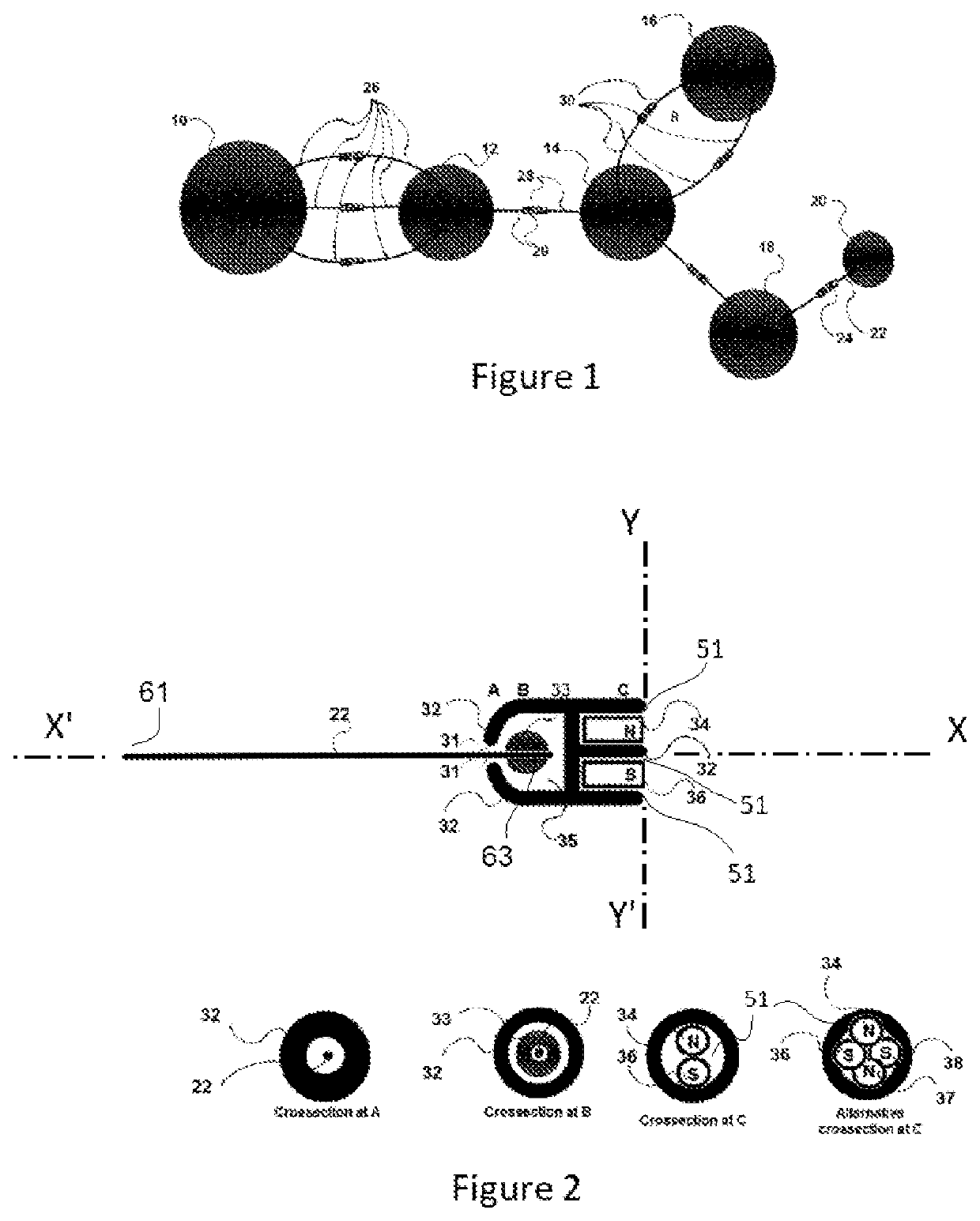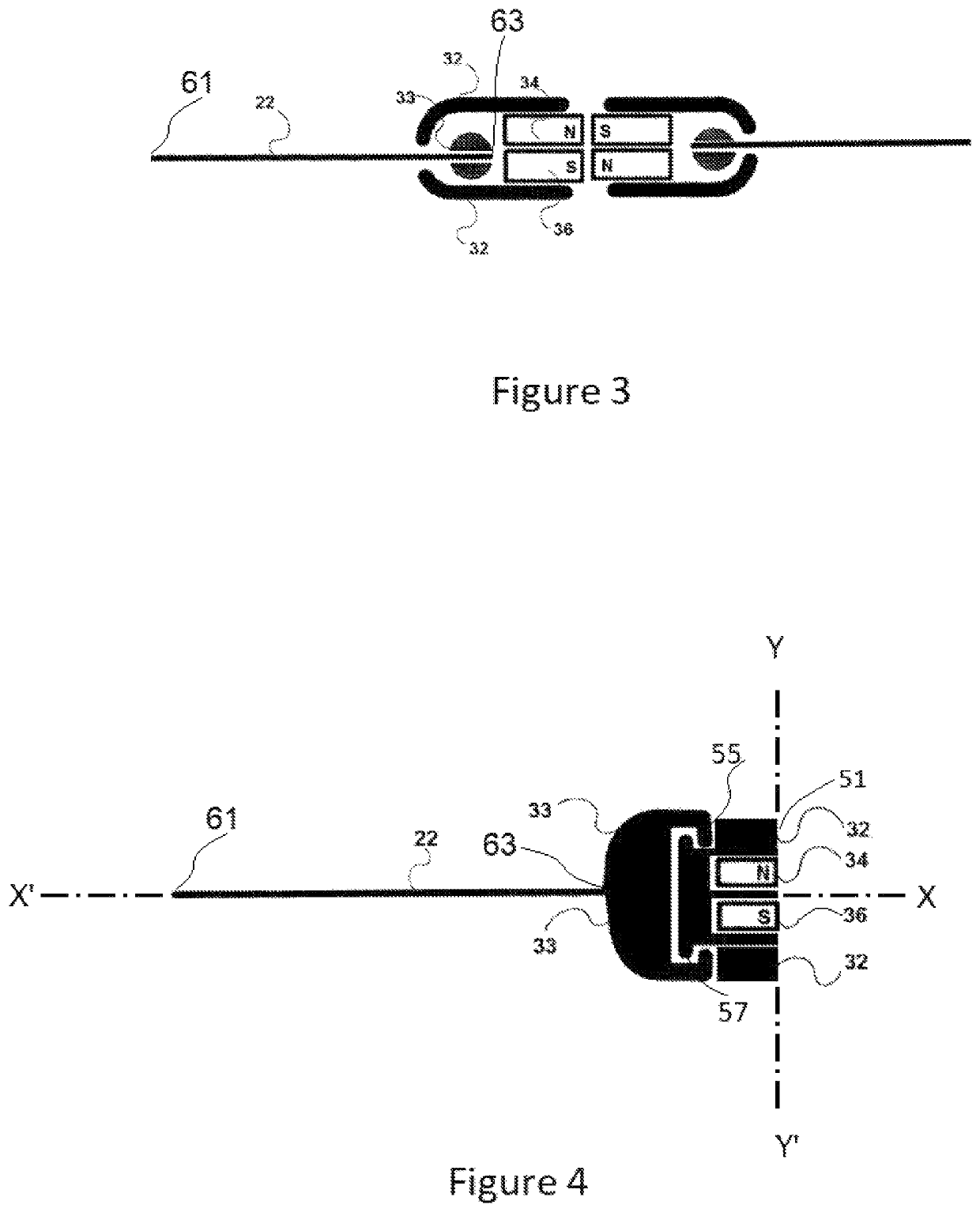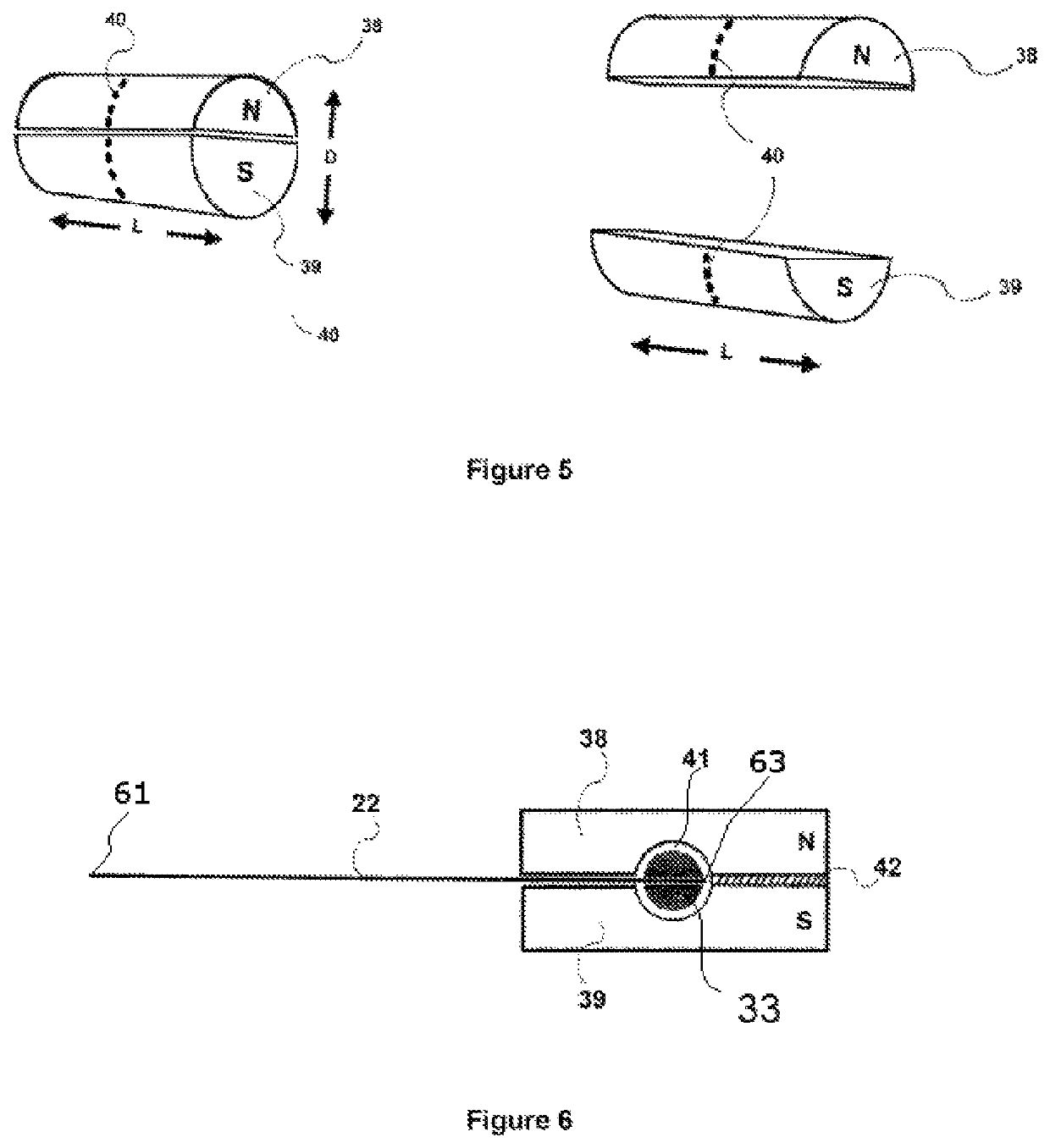Atom-models consisting of a central body attached to orientable magnets
a technology of orientable magnets and atom models, applied in the field of science education, can solve the problems of slow physical force of lugs into indents, not engaging pedagogically, and misrepresenting the speed at which real bonds are formed,
- Summary
- Abstract
- Description
- Claims
- Application Information
AI Technical Summary
Benefits of technology
Problems solved by technology
Method used
Image
Examples
Embodiment Construction
Definition of Terms
[0021]The term “filament” refers to a long, thin, durable, flexible material made of nylon, nylon-coated wire, silicone, carbon fibre, carbon composite, or ceramic, or any other material that provides those properties, and which may or may not be made of a plurality of smaller threaded threads.
[0022]The term “magnetic assembly” refers to one or more magnets, which in the preferred embodiment are small N50 or N52-grade rare earth magnets, and which in the preferred embodiment are rod-shaped or solid rectangular prism-shaped, attached together in alternating sequence in such a manner that the North Pole(s) and South Pole(s) are adjacent to each other, and plane of the flat pole surfaces are at 90° to the filament axis and face towards the magnetic assembly of a different bond model. Other embodiments are not limited to the use of rod-shaped magnets of cylindrical shape wherein the length is greater than the diameter, or disc of cylindrical shape wherein the diameter...
PUM
| Property | Measurement | Unit |
|---|---|---|
| flexible | aaaaa | aaaaa |
| multi-polar magnetic | aaaaa | aaaaa |
| contact forces | aaaaa | aaaaa |
Abstract
Description
Claims
Application Information
 Login to View More
Login to View More - R&D
- Intellectual Property
- Life Sciences
- Materials
- Tech Scout
- Unparalleled Data Quality
- Higher Quality Content
- 60% Fewer Hallucinations
Browse by: Latest US Patents, China's latest patents, Technical Efficacy Thesaurus, Application Domain, Technology Topic, Popular Technical Reports.
© 2025 PatSnap. All rights reserved.Legal|Privacy policy|Modern Slavery Act Transparency Statement|Sitemap|About US| Contact US: help@patsnap.com



